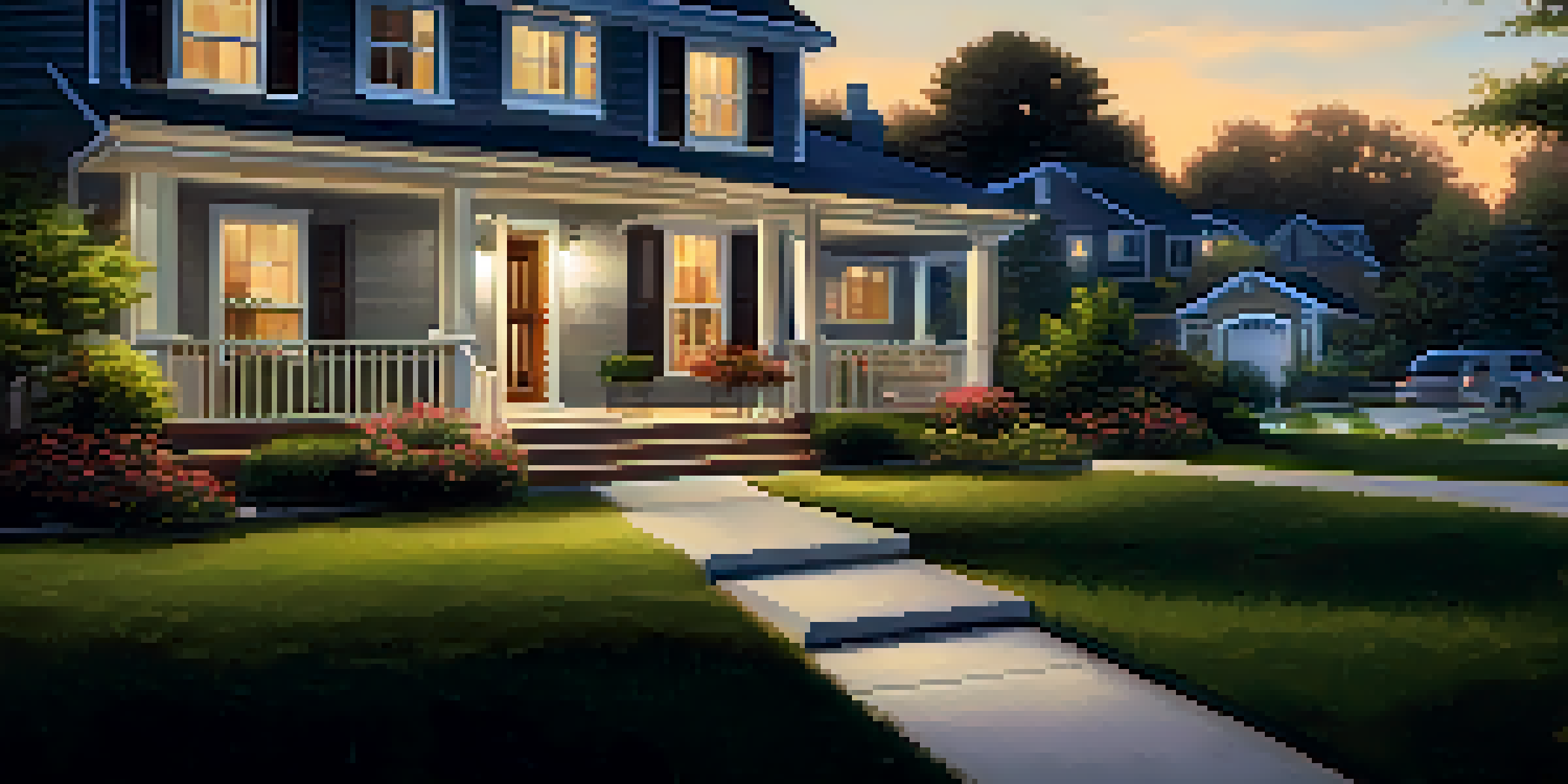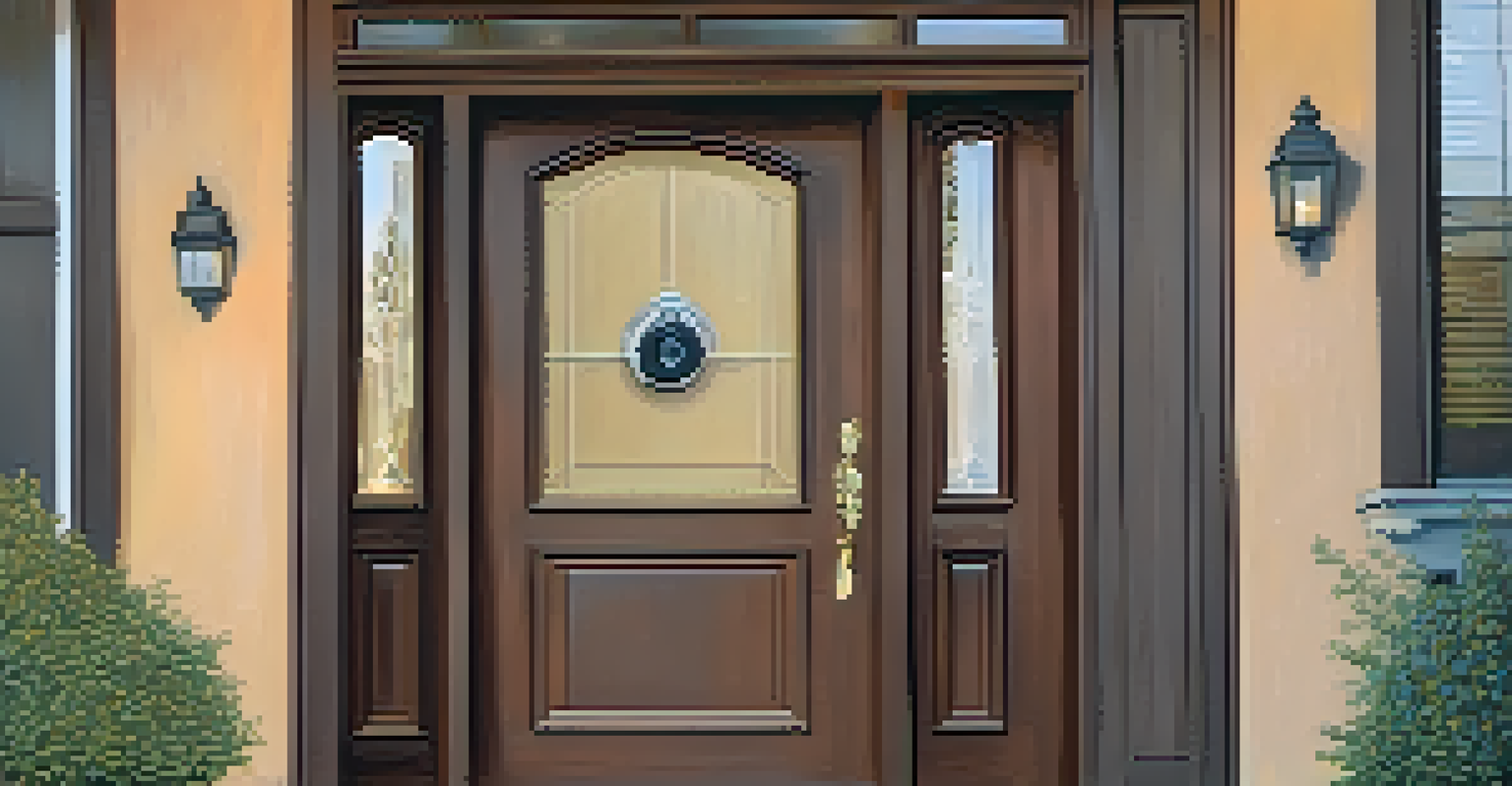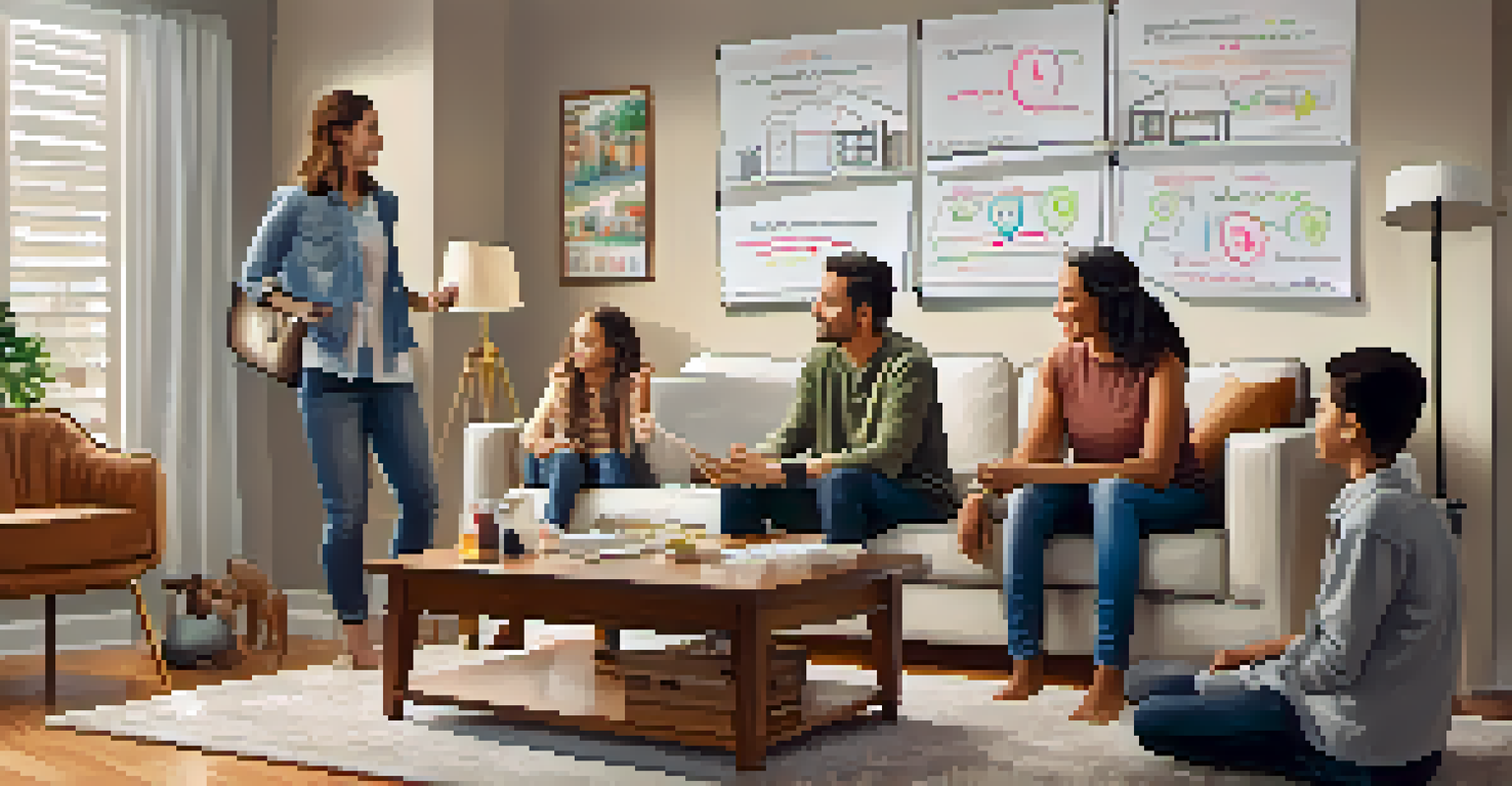How to Conduct a Home Security Risk Assessment

Understanding the Importance of Home Security Risk Assessments
Home security risk assessments are crucial in identifying vulnerabilities in your property. Think of it as a health check-up for your home, where you pinpoint areas that need attention. By conducting this assessment, you can significantly reduce the risk of burglaries and other threats.
The best defense is a good offense.
Many homeowners might not realize that even small changes can make a big difference. For instance, simply trimming overgrown bushes can eliminate hiding spots for intruders. Understanding the importance of these assessments sets the foundation for a safer living environment.
Moreover, this proactive approach helps you feel more secure and at ease in your home. Knowing that you've identified potential risks allows you to take steps to mitigate them. Ultimately, it’s about creating peace of mind for you and your loved ones.
Gathering Information: What to Look For
The first step in conducting a home security risk assessment is to gather information about your property. This includes noting the layout of your home, the locations of doors and windows, and any outdoor areas like garages or sheds. Each of these elements plays a role in your overall security.

As you walk through your home, take note of potential weak spots, such as poorly lit areas or easily accessible windows. These are the areas that might attract unwanted attention. A simple flashlight can help you identify dark spots that need better lighting.
Conduct Home Security Assessments
Regular home security risk assessments help identify vulnerabilities and enhance safety.
Additionally, consider your neighborhood's crime statistics. Knowing the crime rates in your area can help you understand what specific threats you might face. This data can guide your assessment and help tailor your security measures accordingly.
Evaluating Access Points: Doors and Windows
Access points, such as doors and windows, are the primary entryways for intruders. Start by checking the quality of your doors and locks; are they sturdy enough to withstand a forced entry? Reinforcing these access points is a critical step in enhancing your home’s security.
Security is not a product, but a process.
Don’t forget to assess your windows, too. Are they easy to open from the outside? Consider installing window locks or security films to make them more resistant to break-ins. A simple yet effective window lock can deter potential intruders.
Finally, ensure that all access points are well-lit. Motion sensor lights can be a great addition to deter unwanted visitors. A well-lit area can make a significant difference in how secure you feel in your own home.
Assessing Outdoor Security: Lighting and Landscaping
Outdoor security plays a vital role in your home's overall safety. Start by evaluating the lighting around your property; are there dark corners or areas that are rarely illuminated? Installing motion-activated lights can enhance visibility and reduce the chances of an intruder approaching unnoticed.
Additionally, your landscaping can contribute to your home's security. Tall shrubs or trees can provide cover for someone trying to break in. Consider trimming back any excessive foliage to eliminate these hiding spots.
Involve Family in Security Planning
Engaging your family in the security assessment fosters responsibility and awareness among all members.
Creating a clear line of sight is essential for both you and your neighbors. A well-maintained yard not only looks good but also enhances security by minimizing potential threats. Remember, a little upkeep can go a long way in protecting your home.
Evaluating Technology: Alarms and Surveillance Systems
Modern technology offers a variety of tools to enhance your home security. Start by evaluating any existing alarm systems; are they functioning properly and monitored? An alarm system that is not regularly tested may give you a false sense of security.
Surveillance cameras can also be a valuable asset for home security. Consider installing cameras at key points around your property, such as entryways and backyards. These cameras not only deter intruders but also provide evidence in case of an incident.
Lastly, explore smart home security options. Devices like smart doorbells and security systems can be controlled remotely, giving you peace of mind when you're away. Embracing technology can significantly improve your home's security.
Involving Your Family in the Security Assessment Process
Home security is a team effort, and involving your family in the assessment process is crucial. Start by discussing the importance of security and how everyone can contribute to maintaining a safe environment. Engaging your family fosters a sense of responsibility and awareness.
Consider conducting a family meeting to share findings from your risk assessment. This way, everyone can voice their concerns and suggest improvements. Open communication can lead to more comprehensive security measures that everyone understands.
Update Security Measures Regularly
Regularly reviewing and updating security measures ensures they remain effective against evolving threats.
Finally, create a family safety plan that outlines steps to take in case of an emergency. This plan should include contact information and roles for each family member. When everyone knows what to do, it enhances your overall security and preparedness.
Regularly Reviewing and Updating Your Security Measures
Conducting a home security risk assessment shouldn't be a one-time event. Regularly reviewing and updating your security measures is essential to keeping your home safe. As your life changes—like welcoming new family members or moving furniture—so should your assessment.
Set a reminder to revisit your assessment every six months or after significant life events. This periodic check-up can help you stay ahead of potential risks and ensure your security measures are still effective. Life is dynamic, and so are the threats to your home.

Moreover, staying informed about new security technologies and trends can enhance your preparedness. Regularly researching can lead to discovering better equipment or methods to secure your home. A proactive approach ensures you’re always ready to tackle new challenges.